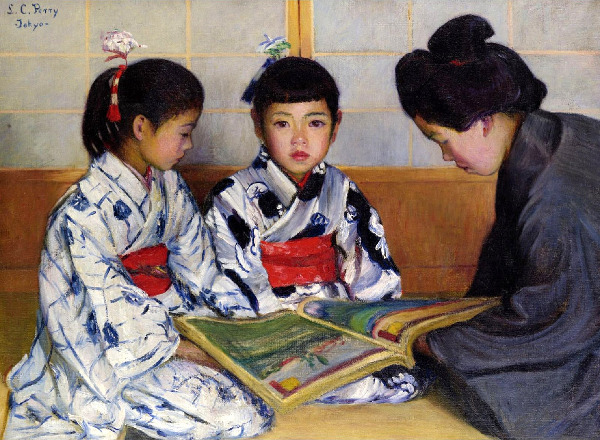This blog has been inactive for a long time for various reasons that have to do with work, work and work. But I have been writing a few things lately (for work) and I thought I could share one of them. There are about 30,000 employees in the European Commission (my current workplace), most of them what we call knowledge workers and as you can imagine the issue of how they learn and how best they can share their knowledge is crucial. This is a short piece I wrote for the internal publication, “Commission en Direct”, summarizing what I have learned the last years about learning itself. I am not in a position to give a comprehensive bibliography and I was restricted to use online resources and books I could find in our internal library. Still I think the indicative titles can give you a starting point.
Here it is. my take about how people learn. I hope you won’t be alienated by the serious writing style 🙂
People have been trying to understand learning for well over 2,000 years. However, today’s developments in neuroscience, cognitive psychology and the use of technology are shedding new light on how our brains work and what this means for our personal and professional learning.
The importance of learning in the professional – or on-the-job – context is undisputable and it may be what makes the difference between successful and unsuccessful businesses. As the researchers Jake Reynolds, Lynne Caley and Robert Mason (2002) have noted, “an organisation’s human capital – the knowledge, skills, competencies, relationships and creativities invested in its people – has emerged as a key competitive factor”.
In this introductory article about how people learn, we look at some of the key ideas about learning nowadays and their implications for our professional lives.
Learning and our brain
We now know that our brain has a quality referred to as ‘plasticity’, which means that it keeps changing even at a very old age. Contrary to what was believed in the past, brain development is lifelong, and not predetermined at birth or within the first three years. There are periods of our life that are critical for some kinds of learning, but in general, as [Paul Jones (2009) states: “throughout life, the brain is plastic and its connectivity, functionality and even structure are influenced by experience, including educational experience”. Learning changes the physical structure of the brain through the process of continuous interactions between the learner and the external environment.
Contextual learning
The influential Lev Vygotsky was one of the first scientists to develop the idea that all learning occurs in a cultural context and involves social interactions. Now, we know that learning is a process of drawing connections between what is already known or understood and new information. Thus, prior knowledge is important to the learning process. People make connections and draw conclusions based on a sense of what they already know and have experienced. This means that in order to learn anything new we have to anchor it to something we already know. Teachers, trainers or our peers can help us to make sense of information by providing conceptual maps.
Mistakes’ added value
Mistakes are essential when it comes to learning. They mean that we act, experiment and evolve. As the American organisational behaviour specialist David Kolb says, essentially all learning is relearning. Of course, it all depends on how this culture of experimentation is supported at work. “Organisations that allow failure also provide the conditions necessary to support natural learning and innovation”. (Reynolds, Caley and Mason 2002).
Social and informal learning
Much learning occurs in groups and among individuals engaged in tasks together. People learn from each other as well as from experts. Learning opportunities in social contexts enable people to learn together and retain more of what they learnt. One noteworthy find of various studies is that “70% of what people know about their jobs, they learn informally from the people they work with” (Cross, 2007). Marcia Conner also mentions that “most learning doesn’t occur in formal training programs. It happens through processes not structured or sponsored by an employer or a school. Informal learning accounts for over 75 percent of the learning taking place in organizations today”
Learning with your heart
Both thoughts and emotions shape the learning process. Metacognitive skills —being able to think about and monitor one’s own thinking — enable learners to manage their own learning process, to learn difficult new concepts, and to problem-solve effectively. Emotions also play a role – when we are anxious, depressed, or distracted, we cannot focus to process information. Therefore creating emotionally safe learning environments can enhance our learning experiences and improve our retention.
To sum up, contemporary learning theories – influenced by new developments in neuroscience and cognitive psychology as well as the use of new technologies – recognise the role of experience and reflection in the development of ideas and skills. Different objectives require different kinds of learning. As a result, the role of teachers is changing and, to be successful, individual learners need to take greater ownership of their own learning. And this is also in organisations’ interests.
Resources:
Marcia Conner, http://marciaconner.com/resources/informal-learning/
Jay Cross, ‘Informal Learning’ (2007)
Linda Daling Hammond, Kim Austin, Suzanne Orcutt and Jim Rosso, ‘How People Learn: Introduction to Learning Theories’ (2001) http://www.stanford.edu/class/ed269/hplintrochapter.pdf
Eleanor Dommett, Ian Devonshire & Richard Churches, ‘Learning and the Brain’ (2011)
Paul Howard Jones, Neuroscience, learning and technology (14-19), Becta, (2009) (http://www.bris.ac.uk/education/people/academicStaff/edpahj/publications/becta.pdf)
Kolb, D.A. (1984). Experiential Learning: Experience as the source of learning and development. New Jersey: Prentice-Hall Inc.
Jake Reynolds, Lynne Caley and Robin Mason, ‘How do people Learn?’ (2002)
Lev Vygotsky

